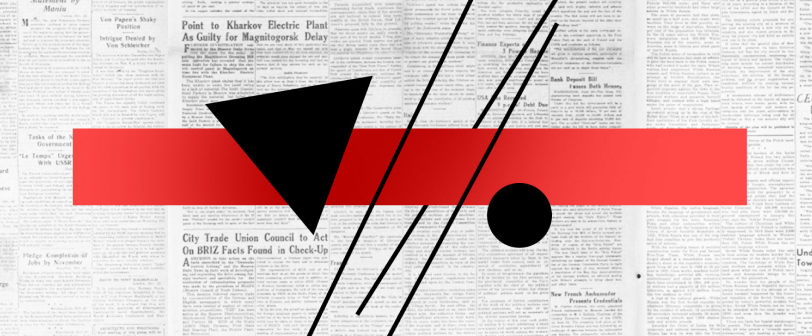Различные интерпретации
Но балет сгладил эти обстоятельства. Все три толстяка похожи друг на друга. «Вождем народа» становится красивый спортсмен в белом, которого из тюрьмы спасают танцор, акробат и врач.
Ни в художественном, ни в политическом отношении в этом балете нет никакой современности, и тем более революции. Печатная программа действительно указывает на разницу между «порабощенным капитализмом искусством» и «более свободным» искусством народного праздника. Но даже звездный балет умел отличать придворные танцы от крестьянских праздников и извлекал из различий приятные художественные контрасты.
Ничто в «Трех толстяках» не указывает на то, что они были сочинены во времена революции, за исключением, возможно, одного короткого момента в конце первого акта, когда сильный ветер — предположительно революция — развеял множество идущих людей и силуэты знамен. Это было волнующее действие, которое вызвало аплодисменты публики. Был еще один персонаж — продавец воздушных шаров, танцевавший с вызывающей свободой, свойственной современной советской молодежи. Можно было бы даже проследить дух пролетариата в старой одежде, которую носила группа заключенных, которых увозили в тюрьму на заднем плане. За исключением этих слабых намеков — и даже они имеют свои прообразы старинных балетов — «Три толстяка» оказались лишь переработкой старого материала.
Первый акт обещал бурлеск традиционного балета. Страусиных перьев и золотой брони было достаточно, чтобы придать спектаклю сатирическую легкость. Это было сделано нелепо толстыми мужчинами и абсурдно медлительным церемониймейстером. Но по мере того как в балете подробно описывался эпизод с танцующей куклой, оживающей в образе возлюбленной принца, надежда на сатиру угасает. В этом, как и в пленении спасенного танцора, угадывалась обычная сказка.
При этом балет выглядит артистически. Сцена в темнице, марш ремесленников, даже сцена неповиновения заключенного могли бы разбавить монотонность. После второго акта несколько человек ушли от скуки. Для меня это не было ни скучно, ни волнительно. Это был просто хороший ортодоксальный балет, который приятно смотреть.
Different Interpretations
But the ballet has ironed this out. The three fat men are all alike, mere comedy figures of overgrown gluttons. The «people’s leader» becomes a handsome athlete in white, who is saved from jail by a dancer, an acrobat and a doctor.
Neither artistically nor politically is there any modernity, much less any revolution in the piece. Its printed program points indeed to the «difference» between the dances performed in the palace of the «Three Fat Men» – «art enslaved under capitalism» – and the «freer» art of the people’s festival. But even the ballet of stardom knew how to distinguish between court dances and peasant festivals, and drew pleasant artistic contrasts from difference.
Nothing in «Three Fat Men» indicates that it was composed since the Revolution except possibly one brief moment at the end of the first act when a great wind, presumably the Revolution, blew a host of marching men and banners in silhouette along a shadow screen. That was a stirring touch, which won applause from the audience. There was also one character – the seller of ballons, who danced with a certain gay, defiant freedom characteristic of modern Soviet youth. One might perhaps even trace the proletarian touch in certain old clothes worn by a group of prisoners, strictly in the background, who were being led away to jail. Except for these faint intimations – and even these have their prototypes in ancient ballets – «Three Fat Men» was a rehash of old material.
The first act to promise a burlesque of the traditional ballet. The waving ostrich plumes of the guards were just enough like feather dusters, and the golden armor just enough like football padding to provide a touch of farce, hinting that satire was to be the keynote. This was born out by the absurdly enormous fat men and the absurdly ceremonial master of ceremonies. But as the ballet advanced to stress at length the episode of the dancing doll who comes to life as the darling of the prince, the hope for satire faded. In this, and in the prisoner saved by a dancer’s trick, there was nothing but usual fairy tale.
The ballet thereby loses artistically. A dungeon scene, a march of artisans, even a scene of some defiance by the prisoner, might have given needed relief to the monotony. A few people went out bored after the second act. To me it was not boring, nor, alas, was it stirring. It was just good orthodox ballet dancing which I find enjoyable to see.




